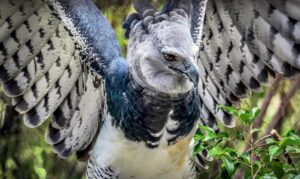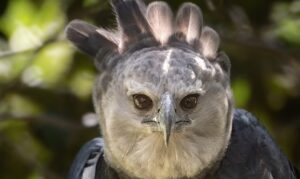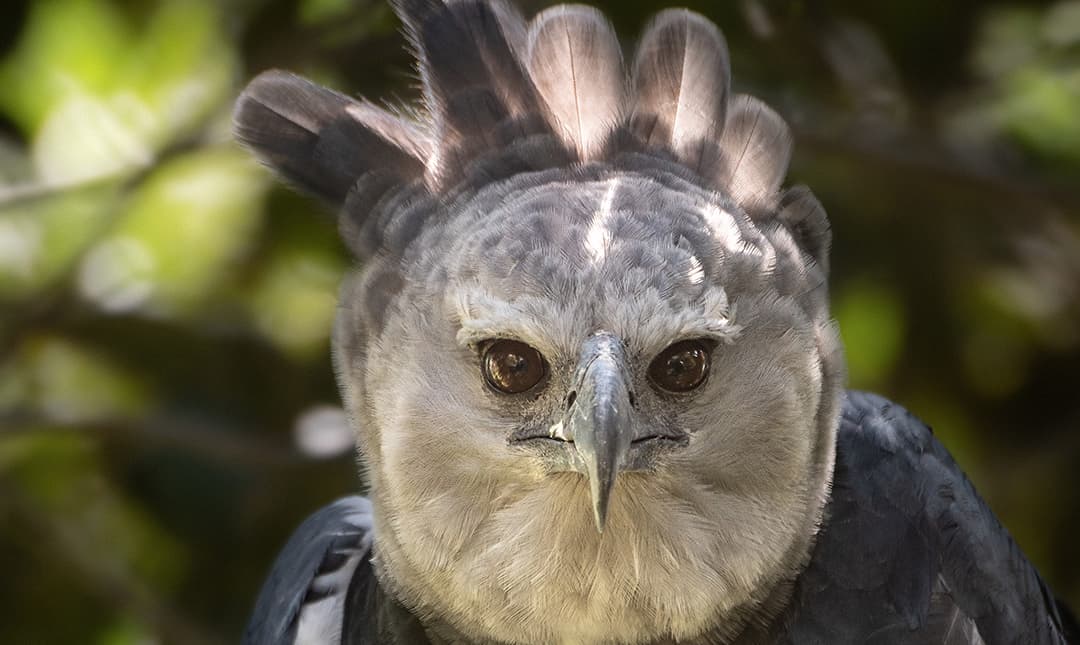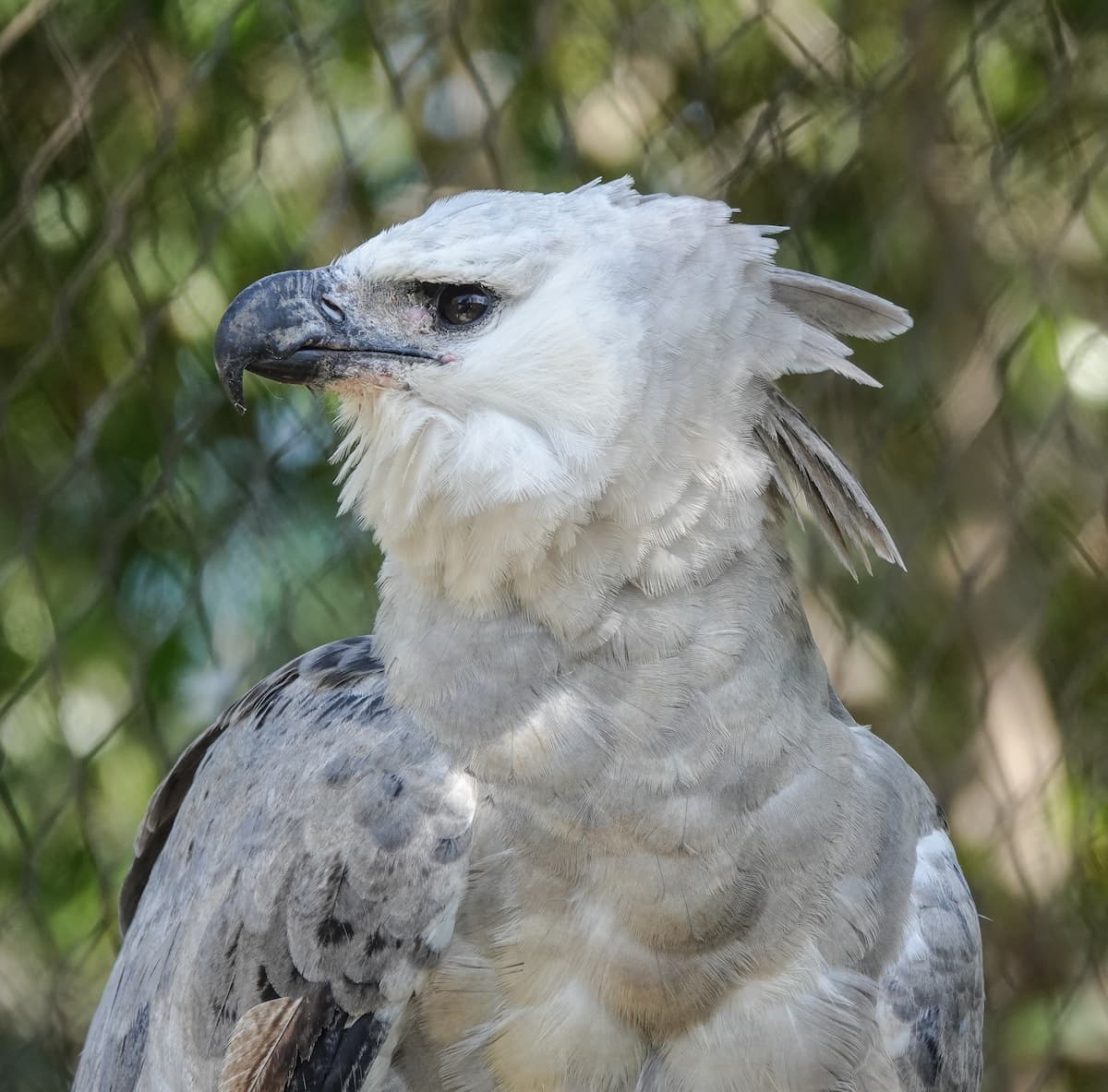About
This large, powerful eagle is an apex predator that hunts monkeys, sloths, porcupines, macaws, and iguanas. A large harpy eagle can carry its body weight, about 17 pounds, in long 5-inch talons. Like owls, eagles can rotate their heads 270 degrees to see behind their backs. A harpy eagle’s facial feathers form a disk-like ruff that is thought to funnel sound to their ears. Once prey is detected, harpy eagles chase at speeds of 50 miles per hour, deftly maneuvering between trees. Prey is grasped with their feet and talons are used to kill. Their powerful hooked beak is capable of breaking mammal bones. In Greek mythology, a harpy was a wind spirit that took the dead to the underworld.
Harpy eagles reproduce only every two to three years. The monogamous pair constructs a huge nest measuring five feet across built of sticks and lined with fresh green twigs and branches. Nest are built in trees at the highest part of the canopy 90–140 feet above the forest floor. The female lays two eggs and incubates them for 53–58 days. The first egg to hatch is nurtured while the second perishes. This enables the parents to invest all their resources in a single offspring. The chicks can fly by 6 months of age but will stay with the parents an additional year or more.
Harpy eagle populations are declining due to deforestation and hunting.



Habitat
Tropical forests in Central and South America.
Diet
Carnivores, they eat arboreal mammals and reptiles as well as other birds. Occasionally they will eat animals on the ground including anteaters, agoutis, and domestic pigs.
Physical Characteristics
Harpy eagles are 3–3.5 feet tall, weigh 10–20 pounds, and have a wingspan of about 7 feet. Females are up to 50 percent larger than males. Their lifespan is 25–35 years.
LOCATION WITHIN THE ZOO
You’ll find this bird in the Rainforest of the Americas. See Zoo Map.



